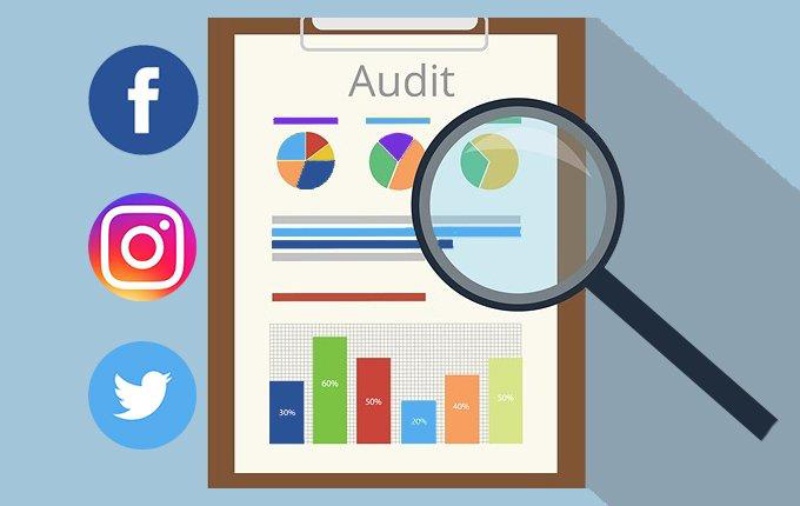Tech
Follow These Steps to Conduct a Social Media Audit

Businesses can increase sales, engagement, and brand awareness with the help of social media. With a well-planned strategy, you can use every trick in the book and still succeed, but occasionally, no matter what you try, nothing seems to be working out.
A thorough social media audit is probably the piece of the puzzle you’re missing if you’re here. Without it, everything you do is just guesswork. Together with our experts, let’s assess your social media presence and put those crucial insights into practice.
What Is a Social Media Audit?
A social media audit entails a detailed analysis of your performance and presence on social media. This is accomplished by assessing the efficacy of your strategies by looking at a variety of metrics from all of your social media accounts.
You can learn more about the advantages and disadvantages of your social media marketing strategy by carrying out a social media audit. To increase engagement and return on investment (ROI), it enables you to determine the preferences of your audience and the kinds of content that work best.
Because 37% of social media users viewed a business’s social media page before making a purchase, it’s critical to make sure that potential customers are further convinced of your brand after viewing your online presence.
Methods for Conducting a Social Media Audit
The process of conducting a social media audit can be intimidating because the term “audit” is primarily used by accountants, and we all know how scary and complicated that sounds. However, if you break it down into manageable steps, it can become simple and even enjoyable.
Step 1: List All Your Social Media Accounts
Even while you are reading this, you are undoubtedly thinking of all of your accounts, so this may not seem very necessary, but everyone occasionally forgets to create new or unused accounts (remember Threads?).
Enumerate every account—active and inactive—where your brand is present. This will provide you with a comprehensive view of your social media presence.
Step 2: Evaluate Your Profiles
Verify the consistency and completeness of each profile. Make sure that every platform uses the same version of your branding (logo, cover photo, bio, etc.). This is essential because an inconsistent profile could mislead followers and dilute the identity of your brand.
Research indicates that inconsistent social media expressions can have a negative impact on the authenticity, trustworthiness, or attractiveness of a person or brand.
Step 3: Examine Your Audience
Examine the demographics of your followers on every platform. Are you speaking to the people you want to? The following tools can assist you: X Analytics, Instagram Insights, and Facebook Insights. These tools offer useful demographic data.
This may also have an impact on the price of your social media advertising since you’ll need to have a thorough understanding of the unique demographics of your target market to avoid losing money by promoting to uninterested parties.
Step 4: Evaluate Metrics of Engagement
Examine your posts’ engagement metrics, including likes, comments, shares, retweets, pins, and any other activity that improves engagement. This can direct your future content strategy by assisting you in determining which kinds of content garner the most interaction.
Step 5: Evaluate Results in Relation to Goals
Assess your social media performance in relation to your business goals and desired outcomes. Are you achieving your goals in terms of engagement, lead generation, sales, and brand recognition? Google Analytics or any other platform-specific insights tool can be used to monitor performance and identify areas for improvement.
Step 6: Conduct a Competitor Analysis
When conducting a social media audit, your rivals make excellent role models. Examine their social media approach. What is it that they’re doing well? What can you infer from their errors and achievements? This is completely free of cost and can offer insightful information and inspiration for your own plan.
Step 7: Summarize Findings
Once everything is documented, put your research results into a thorough report. Emphasize important takeaways, your best and worst points, as well as your room for growth. This will serve as a guide for your future social media strategy and plan.
Step 8: Make a Plan
The next stage after compiling your results is to draft a thorough plan for social media marketing. It should include a summary of your objectives, target market, content plan, publishing schedule, and success metrics. You can make sure that your social media efforts are worthwhile and in line with your company goals by putting a clear plan in place.
Additionally, working with a social media marketing agency can be very advantageous if you want to advance your social media strategy. These organizations provide professional services that enable you to accomplish more with less work. Since the audit is one of the services an agency provides, you can even forego doing it yourself.
-

 Business4 weeks ago
Business4 weeks agoHow to fill MSME Form 1? Step-by-Step Guide
-
Business4 weeks ago
From Marine to Chief: The Leadership Journey of Sean Mannix
-

 Gadget4 weeks ago
Gadget4 weeks agoAfter Grand Success on BLDC Ceiling Fan, Eff4 Is Launching Smart Bulb
-

 Festivals & Events4 weeks ago
Festivals & Events4 weeks agoGoogle Celebrates Cherry Blossom Season with Animated Doodle
-

 Business2 weeks ago
Business2 weeks agoPrakash and Kamal Hinduja: Driving Social and Environmental Change
-
Education3 weeks ago
Fred DuVal: University Leadership as a Critical Resource for Climate Change Research and Life-Saving Solutions
-

 Sports4 weeks ago
Sports4 weeks ago2025 NASCAR Craftsman Truck Series Baptist Health 200 at Homestead-Miami Speedway: Race Preview, Prediction, Schedule, Entry List, Drivers to Watch and How to Watch
-

 Health2 weeks ago
Health2 weeks agoThe Hinduja Brothers Commitment to Global Health: Empowering Communities Across Borders

























